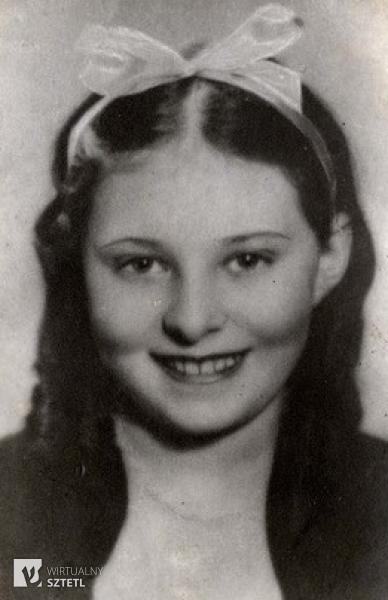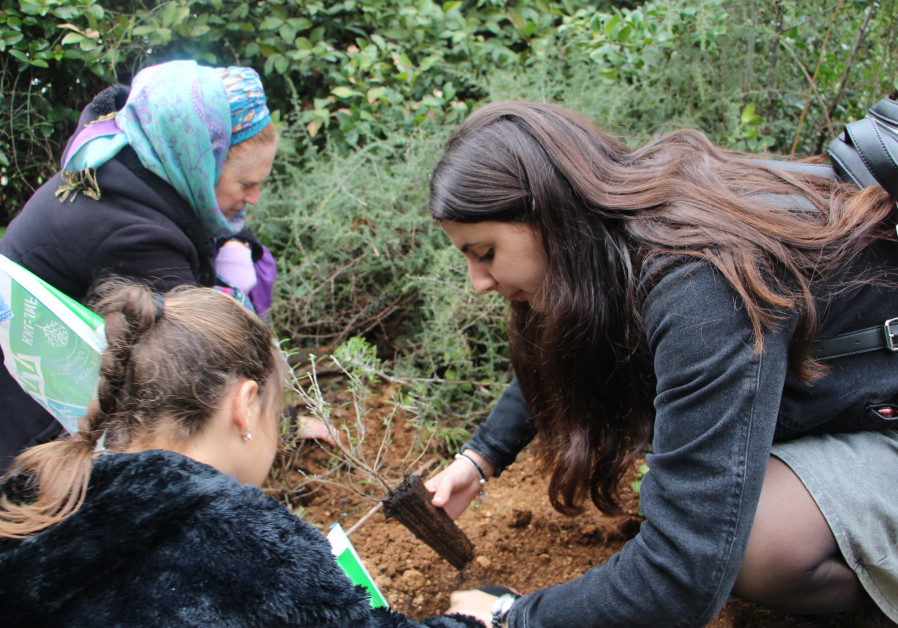 Josima Feldszuh
Josima Feldszuh
Agata Korba
 Josima urodziła się w 1929 roku. Już w wieku 5 lat rozpoczęła naukę gry na fortepianie. Pierwsze lekcje pobierała pod okiem matki, Perły (Pniny) z domu Richter, pianistki i muzykolożki pochodzącej z Czortkowa. Ojciec Josimy, Rubin Feldszuh (także Feldschuh, Feldschu, Ruben Ben-Szem), pisarz i działacz syjonistyczny urodzony w Buczaczu, pracował m.in. jako tłumacz przysięgły języków staroaramejskiego, hebrajskiego i jidysz.
Josima urodziła się w 1929 roku. Już w wieku 5 lat rozpoczęła naukę gry na fortepianie. Pierwsze lekcje pobierała pod okiem matki, Perły (Pniny) z domu Richter, pianistki i muzykolożki pochodzącej z Czortkowa. Ojciec Josimy, Rubin Feldszuh (także Feldschuh, Feldschu, Ruben Ben-Szem), pisarz i działacz syjonistyczny urodzony w Buczaczu, pracował m.in. jako tłumacz przysięgły języków staroaramejskiego, hebrajskiego i jidysz.
Przed wybuchem II wojny światowej rodzina Feldszuhów mieszkała na stałe w Czortkowie. W Warszawie prawdopodobnie bywała okazjonalnie. Najczęściej przebywał tam Rubin, który mieszkał w 1930 r. przy ul. Karmelickiej 11, w 1938 r. w mieszkaniu przy ul. Leszno 66. W listopadzie 1940 r., w ślad za rozporządzeniem gubernatora dystryktu warszawskiego Ludwika Fischera, Josima wraz z rodzicami znalazła się na terenie getta warszawskiego.
Według wspomnień Racheli Auerbach, kuzynki Rubina, która zimą 1940 r. zamieszkała z rodziną Feldszuhów na Lesznie, Josima mimo młodego wieku doskonale panowała nad fortepianem, wykonywała z pamięci utwory klasyków takich jak Chopin, Mendelssohn, Czajkowski, Mozart, Beethoven czy Bach, z lekkością przedstawiała własną ich interpretację.
„Słuch absolutny, niespotykana pamięć muzyczna, niezwykła zdolność uczenia się i ogromna sprawność techniczna. Do tego wszystkiego można było zauważyć u niej pierwsze oznaki świadczące o głębszym »wnętrzu«, o wrażliwości w przeżywaniu życia, bogatej emocjonalności”[1.1].
Josima pisała własne utwory, które znamy m.in. z notatnika zachowanego w zbiorach Instytutu Jad Waszem: Lament nad brzegiem rzeki, Ptak opowiada, Ptasia uczta, Wiejscy klezmerzy, Melodia kropli wody czy Szemranie strumyka. Rachela Auerbach zapamiętała także kilka mazurków, kujawiaka, walca oraz pięć melodii inspirowanych pieśniami szabatowymi.
Jej talent szybko został zauważony przez zamkniętych za murami getta muzyków:
„Było to tak, że pewna pani Rabinowicz, śpiewaczka, która była u nas z wizytą, wzięła małą kiedyś ze sobą do »Salonu« na ulicy Ogrodowej, gdzie zbierali się śpiewacy i muzycy żydowscy i w każdy czwartek spędzali razem kilka godzin w otoczeniu dźwięków muzyki. Moja córeczka posłuchała tam gry pewnego pianisty i wygłosiła swoją surową krytykę, ku zdumieniu słuchaczy. Pianista, który dowiedział się o jej krytycznych słowach, wykrzyknął ze śmiechem, arogancko: – Jak jesteś taka mądra, moja mała, to sama zagraj lepiej! Mała usiadła do fortepianu i jej los został przypieczętowany. Wszyscy przerwali rozmowy, zamilkli, przestali się kręcić, we wszystkich pomieszczeniach »Salonu« zapadła cisza. Wszyscy obecni zgromadzili się i stanęli wokół fortepianu, a ich rozszerzone oczy i otwarte usta były oznaką niezmierzonego zdumienia. Kiedy skończyła grać jeden utwór, zmusili ją by grała dalej. Kiedy wróciła do domu przyszła razem z nią pani Rabinowicz i przekazała, że »Salon« postanowił jednogłośnie, iż »świat« musi koniecznie posłuchać gry mojej córki i że kilku pianistów zaoferowało się uczyć ją za darmo” – pisał w dzienniku Rubin Feldszuh[1.2].
Od tej pory Josima pobierała lekcje gry u najlepszych muzyków pochodzenia żydowskiego, m.in. u Hanny Diksztajn (Dickstein), przygotowując się jednocześnie do swojego pierwszego koncertu, który miał zostać zapamiętany jako jedno z najbardziej poruszających wydarzeń życia kulturalnego w zamkniętym getcie. Wybrano utwór – IX koncert fortepianowy Wolfganga Amadeusza Mozarta – oraz miejsce – salę „Melody Palace” przy ul. Rymarskiej 12. Już po pierwszej próbie dziewczynka zdobyła uznanie zespołu – 45 doświadczonych artystów występujących przed wojną w Filharmonii Warszawskiej, Operze czy orkiestrze Polskiego Radia, w tym Ludwika Holcmana, Mariana Neuteicha i Adama Furmańskiego.
Oto w sobotni deszczowy dzień, 15 marca 1941 roku, miało się odbyć sensacyjne wydarzenie – jedenastoletnia wtedy Josima zagra jako solistka z najlepszymi muzykami Żydowskiej Orkiestry Symfonicznej! Koncert przyciągnął tłumy; widownia niecierpliwie czekała na pojawienie się „cudownego dziecka”. W pierwszej części występu artyści zagrali Wesele Figara i Symfonię G-moll Mozarta oraz symfonię Niedokończoną Franza Schuberta. Następnie na scenę weszła Josima i zagrała IX koncert Mozarta.
„(…) znała ten koncert z taką precyzją i tak idealnie, że nie da się tego porównać z niczym. Każdy dźwięk był zapisany w jej krwi jakby grała go już podczas stworzenia świata”[1.1.2].
Zachwycona publiczność nagrodziła artystkę gromkimi brawami. Na bis Josima zagrała dwie kompozycje własnego autorstwa. Rubin Feldszuh wspominał ten dzień, jako moment w którym cała rodzina na chwilę zapomniała o wojnie, getcie i tragicznej sytuacji materialnej; urządzono przyjęcie dla nastoletniej artystki, jej nauczycieli, przyjaciół i rodziny. Gratulacjom, upominkom i zachwytom nie było końca.
„Kiedy zapytaliśmy, jakie są jej życzenia odparła ze zbytnią »skromnością«, że ma tylko dwa cele, być najdoskonalszą pianistką na świecie ale nie tylko wśród kobiet, lecz również największą wśród mężczyzn i po drugie, co jest dla niej jeszcze ważniejsze, tworzyć wielkie kompozycje jak jeden z największych twórców”[1.1.2].
Tuż przed rozpoczęciem Wielkiej Akcji deportacyjnej, Feldszuhowie otrzymali propozycję wyprowadzenia dziewczynki z getta. Nie skorzystali z niej obawiając się rozstania. 22 lipca 1942 r. Niemcy rozpoczęli wywózkę Żydów do obozu zagłady w Treblince. Rodzina pozostawała w ukryciu na terenie getta do stycznia 1943 r., kiedy cała trójka z pomocą łączniczki Emilki „Marylki” Rozencwajg (Szoszany Kassower) wydostała się na tzw. aryjską stronę i znalazła schronienie we wsi Pustelnik, koło Mińska Mazowieckiego. Jeszcze w getcie Josima zachorowała na zapalenie płuc, które w kolejnych miesiącach zostało zdiagnozowane jako zaawansowane stadium gruźlicy. Bliscy dziewczynki do końca wierzyli, że wyzdrowieje. Tak o ostatnich tygodniach życia pianistki pisała Auerbach:
„Należałam do tych żydowskich »aryjczyków«, którzy mogli poruszać się po mieście. Tak się złożyło, że w tym czasie poszłam dowiedzieć się o zdrowie Josimy. Zdążyłam już wówczas nawiązać kontakty po polskiej stronie.
Uznałam, że być może da się jeszcze umieścić Josimę w sanatorium dla gruźlików. Zamierzałam poświęcić temu całą swoją energię, powiedziałam, że stanę na głowie aby ją uratować!W sobotę, 17 kwietnia [1943], w wieczór święta Pesach i Wielkanocy, w wieczór wybuchu powstania w warszawskim getcie poszłam do lekarki, specjalistki od chorób płuc, która badała Josimę i która była także dyrektorką sanatorium dla chorych na płuca w Otwocku. Jej wyrok był krótki i jasny: Nie ma już czego ratować! Płuca Josimy są dziurawe jak sito.
Jej dni są policzone. Może przeżyje jeszcze tydzień a może i tyle nie…(…) Josima zmarła w środę, 21 kwietnia, w drugi dzień święta Pesach, trzeciego dnia powstania. W mieście, w którym snuły się dymy unoszące się znad płonącego getta, wstrząsanym hukiem eksplozji, drżącym od wystrzałów, przyniesiono mi wiadomość. Josima zmarła w malutkiej wiosce Pustelnik – dla mnie jej śmierć była śmiercią drogiej i podziwianej istoty, której życie zostało w pewnym sensie przerwane już tam, za murami tonącymi w krwawej mgle”[1.3].
Perła popełniła samobójstwo tuż po śmierci córki. Ciała obu kobiet już po wojnie zostały ekshumowane z tymczasowego grobu i złożone przez Rubina prawdopodobnie na cmentarzu żydowskim przy ul. Okopowej w Warszawie.
Rubin Feldszuh w 1945 r. wyjechał do Palestyny. Tam założył nową rodzinę, noszącą nazwisko Ben Szem (Ben Shem). Zmarł w 1980 roku.




